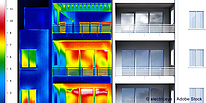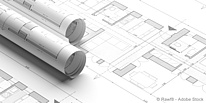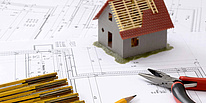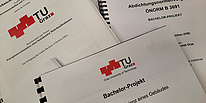Building Physics in Structural Design
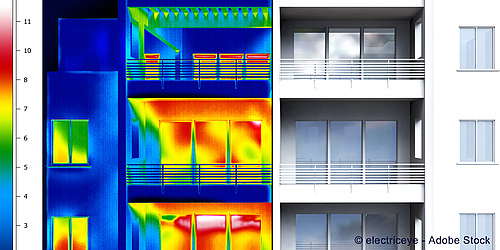
SEMESTER HOURES: 2
TYPE: L (Lecture) and W (Workshop)
CONTENT
Building physics is an inevitable companion for both the renovation of buildings and new constructions. Whether the task is the right component structure, soundproofing or sufficient daylight supply, a physical consideration of the problem is essential.
In the lecture, after an introduction to the range of the subject area "building physics", the following topics will be considered:
- Heat (insulation materials, heat conduction, energy balances and unsteady behaviour)
- Moisture (moisture transport, Glaser diagram)
- Sound (basics of noise)
- Light (basics of daylight and lighting)
- Fire safety (basics and classification of components)
During the accompanying exercise units, the students are brought closer to practical applications in thermal insulation (U-value calculation), moisture protection (Glaser diagram) and sound insulation (air and walking sounds insulation). Using examples from practice, the applicability is illustrated here.
OBJECTIVE
The aim of this course is to impart the basics of the major sub-chapters of building physics. In addition, after this course, the students can apply the theoretical knowledge they have learned using simple practical examples.
Building Construction Basics 1
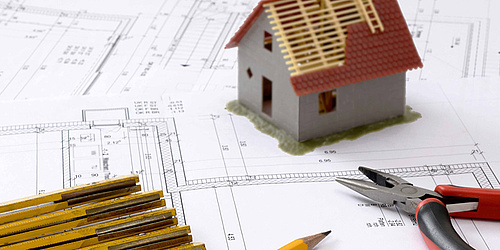
SEMESTER HOURES: 3
TYPE: L (Lecture) and W (Workshop)
CONTENT
Basic principles of building construction are taught in the course. In the case of buildings, this includes the requirements and their functions as well as the construction methods (historical, present and developments) and the structure. In the case of the components, the function of the individual layers and the structural design are conveyed. The areas of application and development of materials in building construction including properties and constructive consequences, joining and connection techniques and the principles of sustainable construction are dealt with. The relationship between theory and practice is shown through photos and current projects, including the associated problems.
An example building is planned in the exercise. The specification consists of a preliminary draft that must be worked out by the students and, above all, adapted in accordance with the applicable legal regulations. Plans from different planning phases (submission planning, foreman planning, detailed planning) are to be drawn up in groups with ongoing consultation with the supervisor. Supervision takes place in joint lecture hall exercises for all students of the course, as well as in individual large and small groups
OBJECTIVE
The aim is to impart knowledge about the structural elements of a building. The students can understand design principles in structural engineering. You can analyse load-bearing elements and their joint action in load-bearing systems, the impact of influences and boundary conditions. They are familiar with the basic layering of components - depending on the functional requirements placed on them. They have knowledge of the construction methods of skeleton construction and solid construction and master the principles of stability and bracing of buildings. They are familiar with the structural design of the components, different processes for joining and shaping components of a building and their effects on shape and function. Acquiring the ability to solve structural engineering problems in a structured manner. Integral approach to design, material and construction, function. Independent construction of complex detailed solutions.

